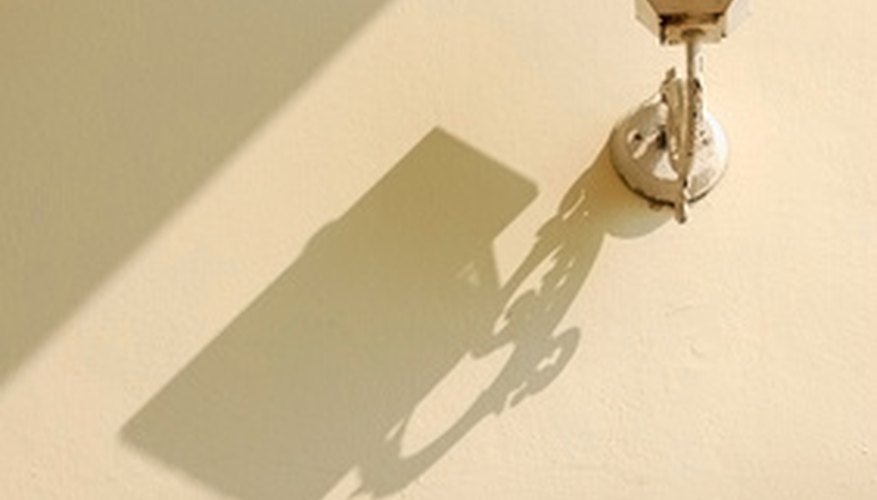Outdoor lighting regulations attempt to limit glare from light fixtures while at the same time providing safety. Whether the light fixtures are on public or private property, lighting standards set by a community provide benefits for all the citizens. Energy conservation also plays a major role in newer outdoor lighting regulations.
Exterior Lighting
While each community sets its own exact standards, many communities adopt lighting ordinances that are similar in nature. Many ordinances specifically address the type of exterior lighting allowed on homes and in driveways. In most instances 1,800 lumens per pole is the maximum for outside lighting. This would typically be a 26-watt fluorescent light, a 50-watt high-intensity light or a 100-watt incandescent bulb. Any light that shines on a neighbour's property is light trespass. Property owners should avoid light trespass and focus their exterior lighting so it doesn't disturb anyone else. In most cities, 15 feet is the maximum height for any lighting on a home, whether the light is on the house or on a pole. During holiday seasons, special outdoor lighting regulations may be in effect. When installing landscape lighting, the homeowner must also avoid light trespass, especially if spotlights are in use.
- While each community sets its own exact standards, many communities adopt lighting ordinances that are similar in nature.
- In most cities, 15 feet is the maximum height for any lighting on a home, whether the light is on the house or on a pole.
Energy Savings
Most cities follow the federal mandate from the U.S. Department of Energy that requires all exterior lighting to have automatic photocells to turn lights on and off. In cases where a photocell light installation is not feasible, lights with timers can serve as a replacement. These timers should allow for adjustments for lighting requirements according to the needs of the season. For example, the lights would be on fewer hours at night in the summer than in the winter. While municipalities do not require their citizens to change to energy-efficient fixtures immediately, they are asking that residents replace older fixtures with new, energy-efficient ones as the older fixtures stop working.
- Most cities follow the federal mandate from the U.S. Department of Energy that requires all exterior lighting to have automatic photocells to turn lights on and off.
- While municipalities do not require their citizens to change to energy-efficient fixtures immediately, they are asking that residents replace older fixtures with new, energy-efficient ones as the older fixtures stop working.
Sky Glow
Many communities are making a conscious effort to reduce the amount of skyglow from outdoor lighting. Sky glow is the amount of light that radiates upward at night. It serves no purpose and does contribute to not being able to clearly see the night sky. To prevent sky glow, outdoor lighting regulations require light shields on fixtures that direct the focus of the lights downward. Not only is this a better usage of the light fixture, but it also contributes to energy savings.
- Many communities are making a conscious effort to reduce the amount of skyglow from outdoor lighting.
- To prevent sky glow, outdoor lighting regulations require light shields on fixtures that direct the focus of the lights downward.
